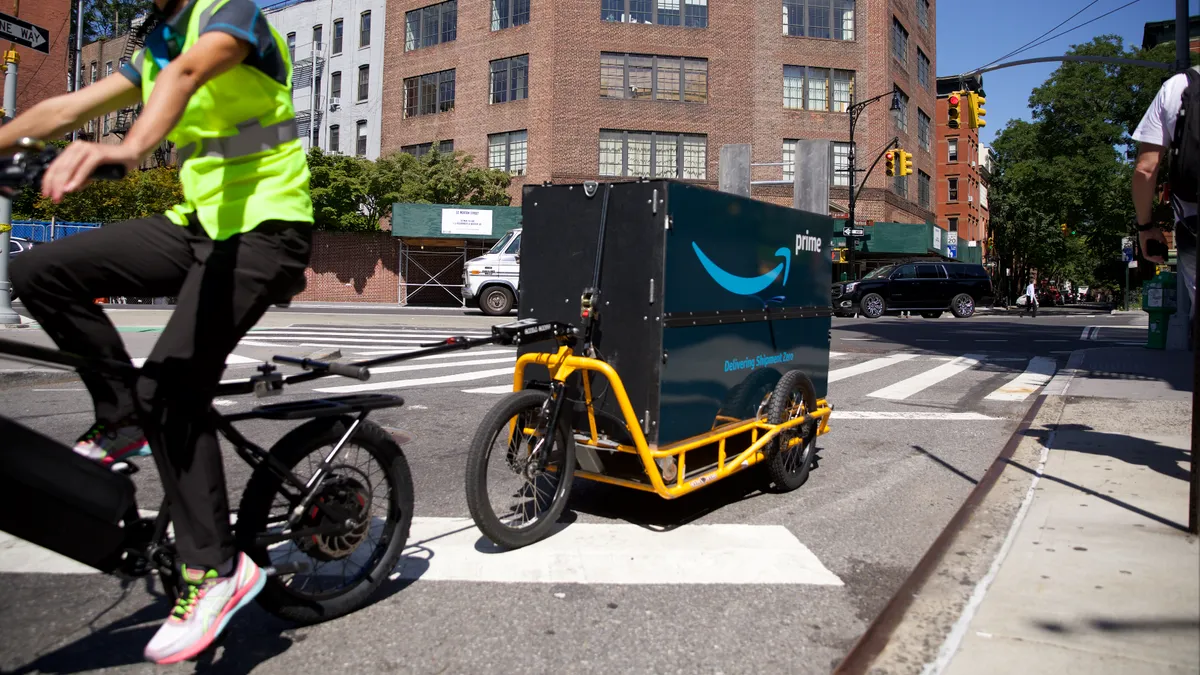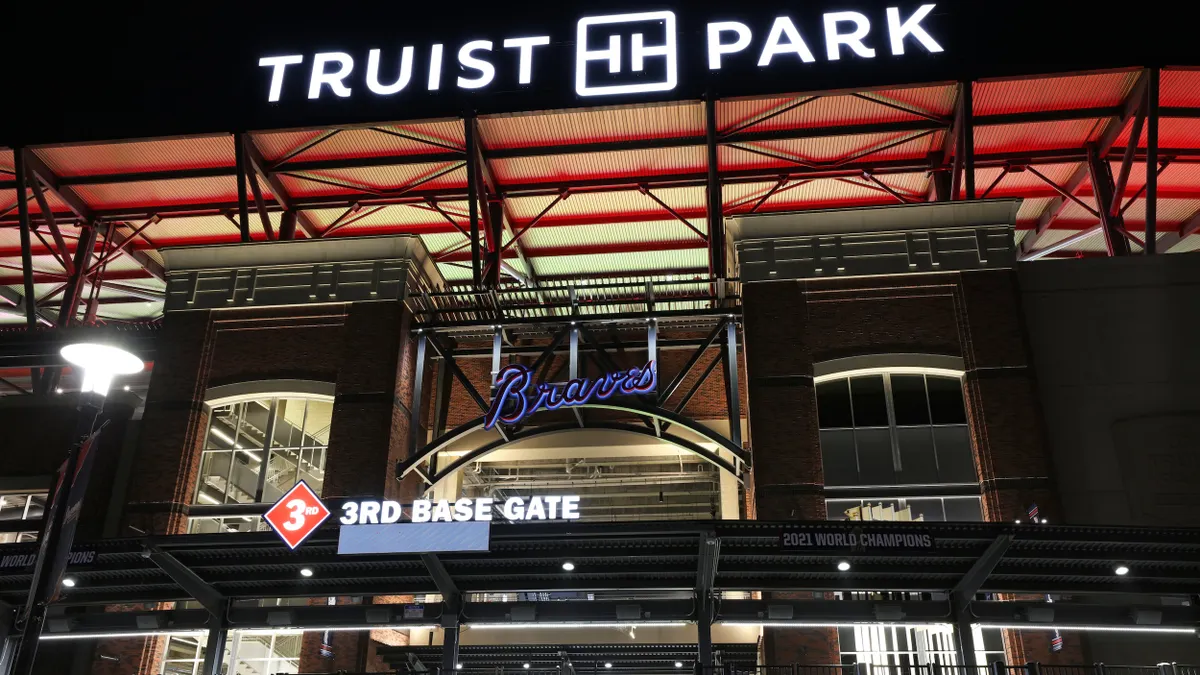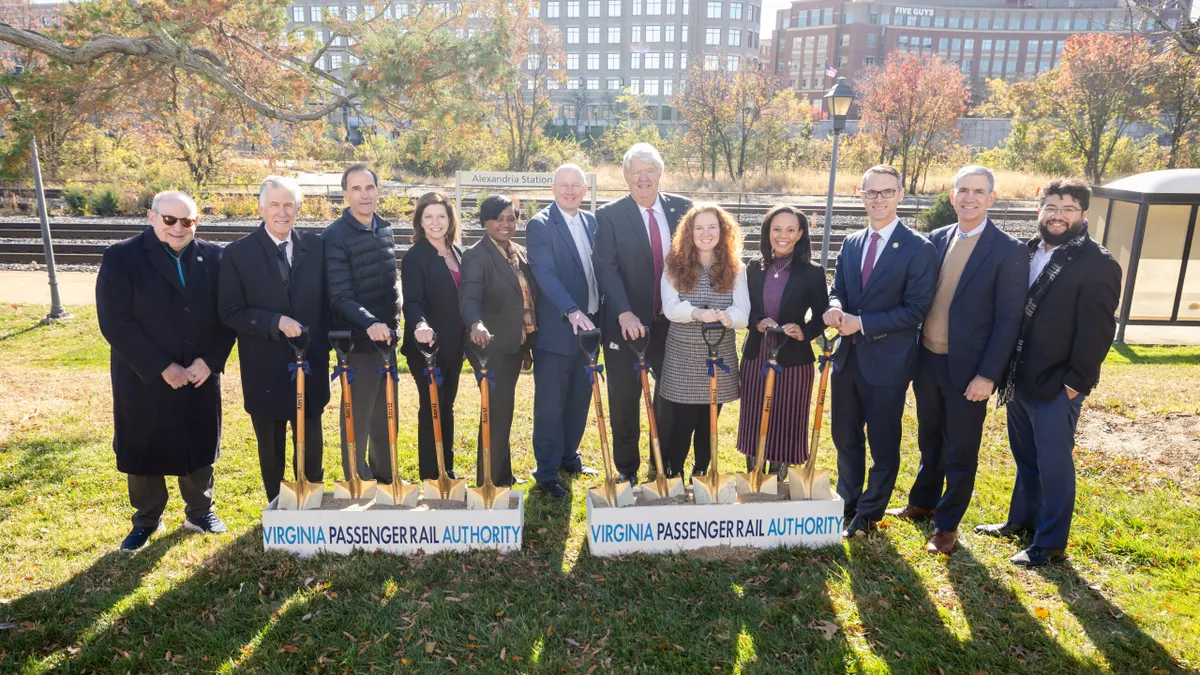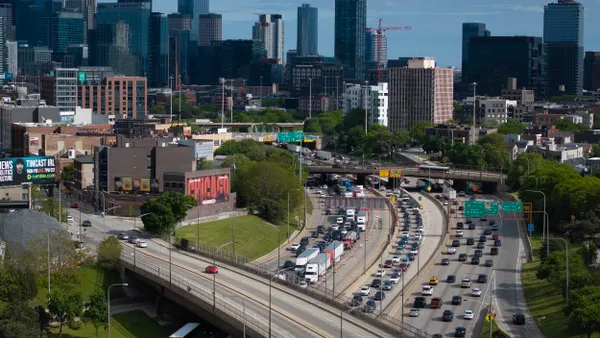Amazon, DHL and UPS will test cargo bikes in New York City as alternatives to traditional delivery vans in a pilot project city officials hope will result in reduced congestion, improved air quality and a safer environment for pedestrians.
Amazon will begin by using 90 bikes to help deliver groceries out of three Whole Foods locations. DHL will start with three bikes making deliveries out of its Manhattan service center. UPS said it would use "a few cargo bikes" during the pilot. All three said they planned to scale up their use over time.
The Department of Transportation (DOT) pilot will last for six months and could be extended depending on the results, the city said in a press release. The DOT will monitor variables like speed, parking and use of bike lanes with an aim to "better understand whether cargo bicycles can successfully fit into the City’s streetscape."
All three of these companies have used delivery bikes in other cities around the world. DHL uses them in Belgium, Germany, the Netherlands and Singapore, according to Bruce Marsh, senior manager of corporate public policy at DHL. UPS operates the bikes in 30 cities around the world, a spokesperson told Supply Chain Dive in an email. Amazon has tested them out in Europe.
Solving the parking predicament
Companies say cargo bikes could save time on deliveries because drivers won't have to worry about dealing with one of New York City's most precious resources: parking space.
The bikes will have a few different parking options available to them.
- The city is going to set up corrals where these bikes will be able to park when loading and unloading, which will be in more high-traffic areas.
- The bikes can park on the sidewalk as long as they keep enough of the walkway free in compliance with the Americans with Disabilities Act.
- The bikes can park, without charge, in the same loading and unloading zones used by traditional delivery vans.
Determining where the bikes will park, though, is an ongoing process the city could change as a result of the pilot project, Marsh said in an interview with Supply Chain Dive.
"Our intention is this will help actually speed up delivery," Marsh said. "It will also help us in terms of our parking fines. The city has also gotten very aggressive in terms of parking and parking management and so this will help us on that end too."

Parking is one of the main issues for vehicles in the city, according to Tony Guggina, senior manager of grocery and Prime Now operations for Amazon in the city.
"What we end up having to do is most of the time, depending on the area of the city ... we use two people in one vehicle, and it's a very costly initiative," Guggina said, explaining that one person would get out to make the delivery while the driver would circle the block.
"A double-parked delivery truck is pretty much the worst that can happen to you in an urban road network."

Matthias Winkenbach
Director of the MIT Megacity Logistics Lab
Cities are just as pressed as companies to help smooth out the parking paralysis. When UPS, FedEx, Amazon or DHL can't find parking space they might end up double parking, which essentially turns the street into a one-way road.
As the number of e-commerce orders grows, logistics companies are delivering more, smaller orders to a larger variety of addresses than they were ten years ago, according to Matthias Winkenbach, director of the Massachusetts Institute of Technology Megacity Logistics Lab.
"There's basically increasing complexity of the last mile delivery routes," he said. "A double-parked delivery truck is pretty much the worst that can happen to you in an urban road network because that basically blocks the entire road link. So that is a major contributor to congestion. It's a major contributor to accidents."

Amazon also relies on people walking for grocery deliveries, which Guggina says isn't efficient and can only be used for orders in close proximity to the store. He said the Whole Foods stores have not had to change their back-of-store operations to accommodate the new bikes.
To navigate, the bike riders use the same technology used by Amazon's other drivers.
"We mount phone mounts on each of the bikes," Guggina said. "So our delivery app has its own maps and it tells you which shop is next and gives you turn-by-turn directions."
Peddling toward greener deliveries
All three of these companies and New York City also have plans to reduce their greenhouse gas emissions in the coming years. Everyone involved said new delivery methods like these electric bikes will be part of making those cuts a reality.
"Our Climate pledge goal is net-zero carbon for the entire company by 2040," Tom Chandlee, a senior program manager for sustainable transportation at Amazon, told Supply Chain Dive in an interview. "So not just the logistics business, but also AWS and the data centers, device production, etc. But regardless of what type of operation, we're committed to making actual changes within our business, in order to eliminate the carbon emissions associated with it, as opposed to offsets outside of our business."
DHL began looking into using cargo bikes in New York City two years ago as part of its GoGreen initiative, which aims to reduce its logistics emissions to zero by 2050. But at the time, electric bikes were illegal in the city. DHL began meeting with state and local officials around the same time the city began talking about trying to reduce truck congestion and emissions.
"It was good timing," Marsh said. "Earlier this year they started allowing e-bikes and then they reached out to us ... when they were ready to start looking exploring a pilot."
Amazon said its delivery bikes have been on the street in New York City since last February. It could still be a few weeks before DHL and UPS bikes are seen on the street. Marsh said DHL's formal deal with the city should be finalized soon.





















